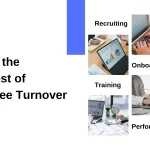
The pandemic changed how people see their work-life balance. During the pandemic, many employees stayed in jobs just because they needed security. At the same time, there were fewer opportunities to change jobs as many companies had a hiring freeze as they navigated the uncertainty. After COVID-19, the world opened up. Workers began asking: “Do I feel safe? Am I valued? Can I balance work and home?”
This is where employee retention post-pandemic became one of the biggest challenges for companies worldwide. Leaders understand that pay alone is not enough to retain top talent. As one CEO put it: employee retention post-pandemic shows that health, flexibility, growth, and care matter as much as compensation.
In this article, we’ll explore what has changed since the pandemic, what has stayed the same, and how companies can keep their top talent.
Before COVID-19, many companies believed that people must sit in an office to be productive. The pandemic proved that people can work from home and still deliver results.
Now workers want to be able to choose from onsite, to fully remote, or hybrid. Employers who have forced everyone back to the office, without reason, drive employees to look for other jobs.
Example: One software company lost 20% of its staff after communicating a strict return-to-office order.
Depression, loneliness, and stress were common during lockdowns. Workers came to understand that mental health is just as important as physical health. Businesses that provide stress management support, wellness days, or counseling are now more successful at retaining employees.
For instance, one call center started offering weekly “mental health breaks.” Employees were encouraged to take time to relax. This small action reduced resignations by 15%.
Many workers are now asking, “Why am I doing this job?” Salary is important, but people also want meaning. They favor businesses that are concerned about people, the environment, and society.
During the pandemic, employees who stayed put just to navigate the uncertainty. Now growth is back in focus as more opportunities are available to them.
The result: lack of training and promotions leads to employee turnover.
Fear of illness has changed employees’ perceptions of the workplace. Companies with clear safety measures, such as clean spaces, medical care, and wellness programs, make employees feel safe and respected.
Take away: Health support, such wellness programs and mental health support, is important.
Although the world has changed, some retention principles remain the same:
So while new needs seem to have appeared, these basic factors remain the foundation of employee retention.
Retention is not new, but it is harder now. Here’s why:
For leaders, this means they need to understand what drives employee engagement.
The initial days are crucial. Employees feel welcomed when the onboarding process is transparent and encouraging. Employers who provide careful onboarding guidance see higher retention rates.
The new norm for many positions is hybrid work. Businesses that give employees flexibility, such as the ability to choose their own work schedule or location, gain the trust of their workforce.
Recommendation: Being flexible means setting guidelines that maintain a balance between personal and professional obligations.
Well-being is now a business strategy. Here’s why:
The pandemic reshaped the workplace forever. What employees value has not changed, it’s just been magnified. A good relationship with the direct manager, safety, growth, and purpose are and always will be important. These are and remain the foundation of employee retention.
Retaining employees after a pandemic is about creating a work environment where people feel safe, valued, and motivated. Companies that understand this will not only retain their employees but also be stronger for the future.
Need personalized support? Contact us today.
It means how companies try to keep their workers after COVID-19. Many people started to think differently about work, so businesses now need new ways to make them stay.
Many workers left because they wanted better pay, more flexibility, or less stress. Some wanted remote work, while others looked for companies that care more about health and well-being.
Companies can help workers stay by offering fair pay, chances to grow, flexible hours, remote options, and better health support. Simple things like listening to workers and showing respect always matter.
Well-being is more important than ever. If workers feel healthy, safe, and supported, they are less likely to leave. Wellness programs, mental health help, and flexible work make a big difference.
Some basics are the same. Workers still want fair pay, job security, and respect. A healthy workplace culture and growth opportunities were always important and still are.

Boosting Productivity Through Retention: A Two-Way Relationship Minal Joshi Jaeckli October 31, 2025 When leaders talk about productivity, the conversation almost always drifts toward tools,.

What Is the Real Cost of Employee Turnover? (And How to Reduce It) Minal Joshi Jaeckli October 28, 2025 Every leader knows turnover is costly,.

How Workplace Flexibility Boosts Employee Satisfaction and Reduces Turnover Minal Joshi Jaeckli October 25, 2025 Work has changed a lot in the past few years..